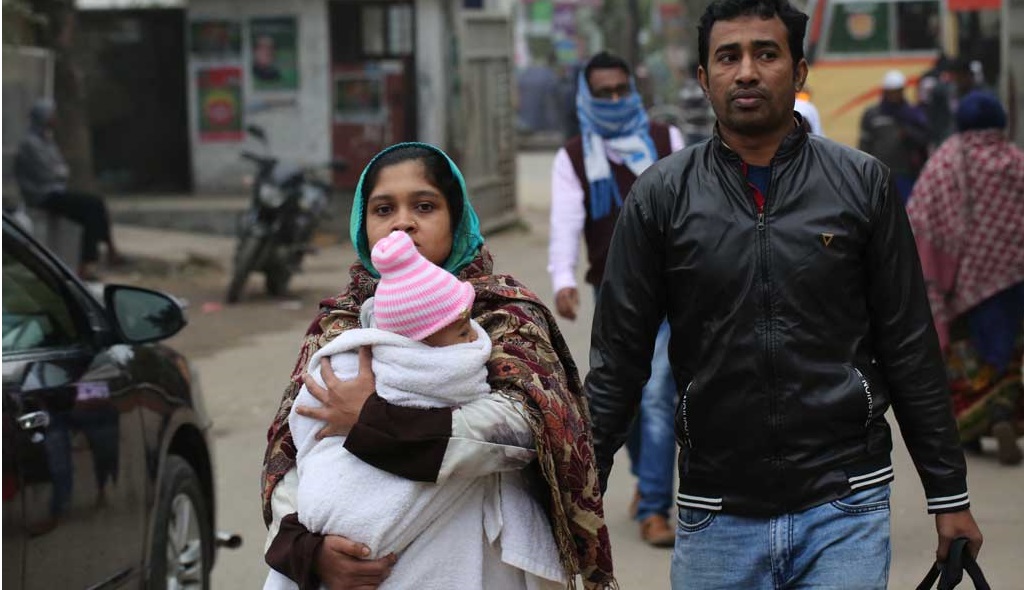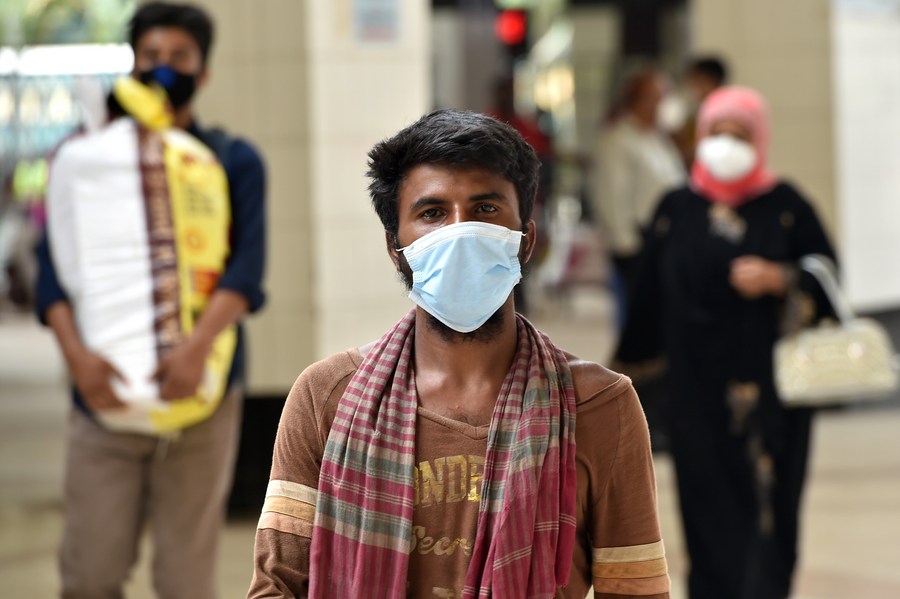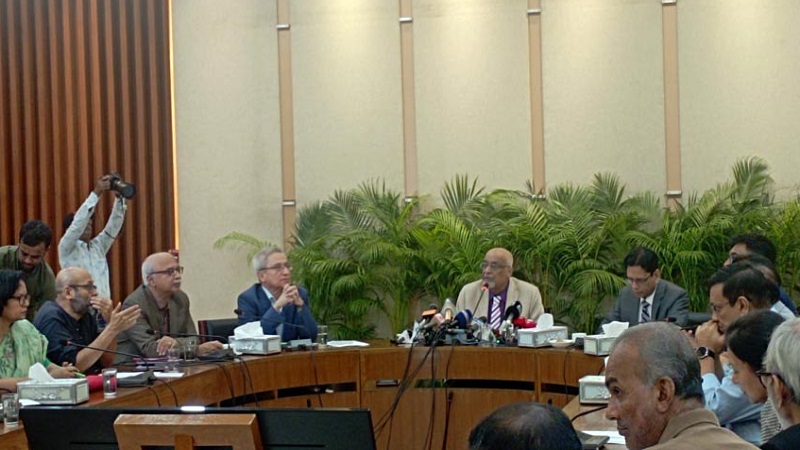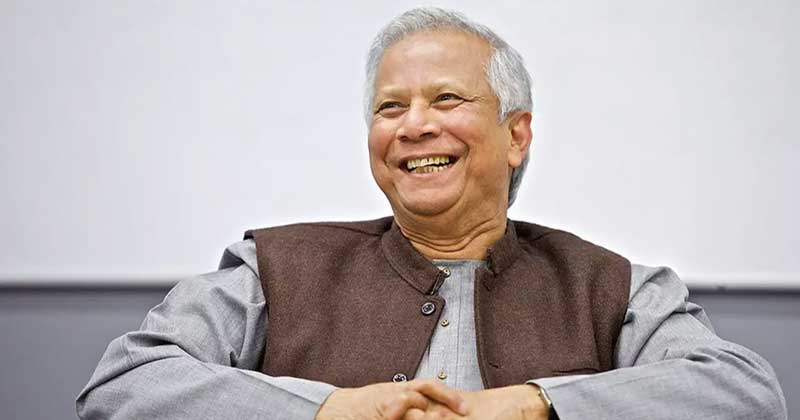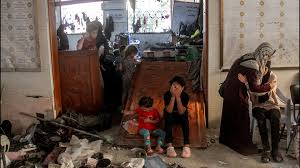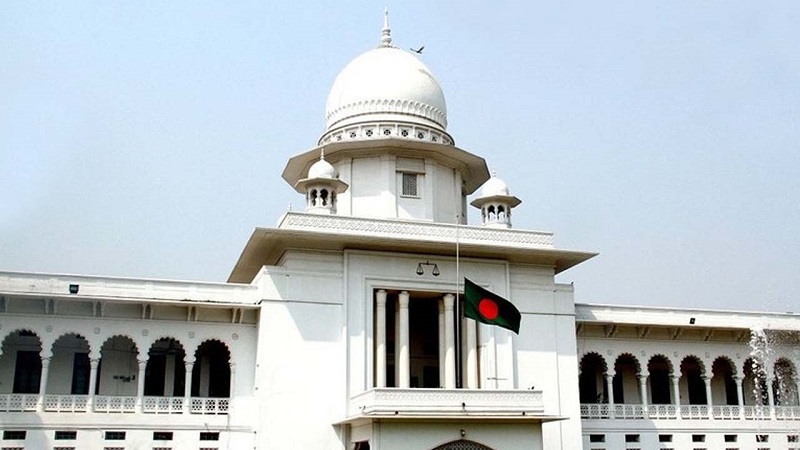Amid the fear of a second wave of COVID-19 infections, patients with cold-related diseases are surging at hospitals across the country as the winter has set in.
The outpatient departments at the government hospitals are being crowded by children and elderly people suffering mostly from acute respiratory infections, pneumonia, bronchiolitis, diarrhoea, asthma, bronchitis and other cold infections.
The inpatient departments at the capital’s major hospitals, including Dhaka Medical College Hospital and Dhaka Shishu Hospital, are also witnessing sharp rises in the number of such patients with the gradual fall in temperature.
‘We are almost out of our bed capacity due to the surge in child cold patients,’ said Dhaka Shishu Hospital epidemiology professor Kingkar Ghosh.
The majority of the children being brought to the hospitals’ outpatient and emergency departments are either pneumonia or diarrhoea patients, he said.
The number of such patients has been increasing since the cold spell began in early December, he added.
A long queue of patients at the DMCH respiratory OPD was seen by this correspondent during a visit to the facility on Monday.
The respiratory OPD has sold tickets to about 250 patients by the noon, said the department’s patient registrar.
The number, he went on, could cross 350 by the end of 2:00pm, the closing time for the OPD.
Patients with respiratory diseases show many common symptoms of COVID-19, including sneezing, coughing and breathing difficulty.
A separate entry to the hospital’s respiratory OPD was opened to lower the risks of COVID-19, doctors said.
‘We’re attending at least one patient a minute,’ said an attending doctor at the department.
She said that the winter usually drew increased number of cold patients to the department, especially in the beginning of January, but this year, she added, it happened earlier.
The situation at the hospital’s paediatric OPD was no different.
About 60 per cent of the children taken there are patients with cold-related diseases, said the patient registrar.
DMCH director Brigadier General Nazmul Haque said that the number of cold-related patients had been on the rise since the beginning of December.
‘We’re having a huge pressure of patients,’ he said, adding that additional measures were taken to tackle these patients due to the COVID-19 threat.
Nazmul said that bed occupancy was rising fast at the inpatient department due to pneumonia and diarrhoea patients.
The Health Emergency Operation Centre and Control Room of the Directorate General of Health Services opened a separate monitoring wing in November to record the cold-related patients flow.
Control room officials said that the number of patients with acute respiratory tract infections, diarrhoea, jaundice, dysentery, conjunctivitis, skin diseases and fever was on the rise across the country.
This winter, at least 210 upazila reported outbreaks of such diseases, said DGHS deputy director SM Jasim Uddin citing control room reports.
Until Monday morning from November 1, the control room recorded deaths of five patients with such illnesses and 1,71,003 cases, who took treatment at the government hospitals alone.
Among the care seekers, 28,144 suffered from acute respiratory infections, 71,601 from diarrhoea and 71, 258 from jaundice, dysentery, conjunctivitis, skin diseases and fever.
Noted virologist Nazrul Islam said that viral, bacterial and fungal diseases thrived in Bangladesh in the winter.
Influenza, parainfluenza, rhinovirus and respiratory syncytial virus infections and a number of bacteria-caused and fungal diseases mark sharp rises in the winter causing hospitals to be overcrowded, he said.
Experts, before the winter, feared a second spell of high COVID-19 infections in the winter, when the incidence of cold-diseases would also increase, and urged the government to prepare for the situation.
The prime minister in September directed the relevant government agencies to prepare for the second wave of infections, but despite the fear of a deteriorating COVID-19 situation becoming a reality, the preparations still remain half-hearted.
Since the mid-November COVID-19 infections and deaths have increased in the country, with critical services like ICU facilities not matching the needs.
‘The government has to prepare for a double load — management of the increased number of patients with asthma, COPD, colds, fever and diarrhoea in the winter while we have the threat of COVID-19,’ said virologist Nazrul, a former vice-chancellor of Bangabandhu Sheikh Mujib Medical University.
Bangladesh has so far tallied 4.92 lakh COVID-19 cases with 7,089 deaths from the infection.


